
very useful to understand liquid
- Subject:
- Applied Science
- Material Type:
- Reading
- Author:
- Kevin Maximo
- Matheo Ryan
- May Ann Antiquisa
- Date Added:
- 03/26/2020

very useful to understand liquid

111
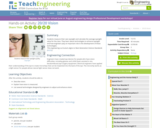
In this activity, students determine their own eyesight and calculate what a good average eyesight value for the class would be. Students learn about technologies to enhance eyesight and how engineers play an important role in the development of these technologies.

Students conduct a simple experiment to model and explore the harmful effects of acid rain (vinegar) on living (green leaf and eggshell) and non-living (paper clip) objects.

Students construct rockets from balloons propelled along a guide string. They use this model to learn about Newton's three laws of motion, examining the effect of different forces on the motion of the rocket.
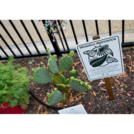
In this lesson, students will develop their fluency with addition and subtraction through a "real-world" application of collecting data about insects in the garden.

The lesson begins with a demonstration introducing students to the force between two current carrying loops, comparing the attraction and repulsion between the loops to that between two magnets. After formal lecture on Ampere's law, students begin to use the concepts to calculate the magnetic field around a loop. This is applied to determine the magnetic field of a toroid, imagining a toroid as a looped solenoid.
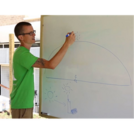
Students in this lesson will apply the use of angles to a real-world problem—finding the angle of the sun to determine the placement of solar panels. This lesson can be used to teach about angles, or to reinforce and apply understanding of angles.
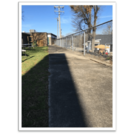
Students in this lesson will apply the use of angles to a real-world problem�finding the angle of the sun to determine the placement of solar panels. This lesson can be used to teach about angles, or to reinforce and apply understanding of angles.

Students analyze the relationship between wheel radius, linear velocity and angular velocity by using LEGO(TM) MINDSTORMS(TM) NXT robots. Given various robots with different wheel sizes and fixed motor speeds, they predict which has the fastest linear velocity. Then student teams collect and graph data to analyze the relationships between wheel size and linear velocity and find the angular velocity of the robot given its motor speed. Students explore other ways to increase linear velocity by changing motor speeds, and discuss and evaluate the optimal wheel size and desired linear velocities on vehicles.

Students learn more about how muscles work and how biomedical engineers can help keep the muscular system healthy. Following the engineering design process, they create their own biomedical device to aid in the recovery of a strained bicep. They discover the importance of rest to muscle recovery and that muscles (just like engineers!) work together to achieve a common goal.
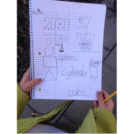
Students will identify and compare attributes of two-dimensional and three- dimensional shapes in the world around them.

Biology is designed for multi-semester biology courses for science majors. It is grounded on an evolutionary basis and includes exciting features that highlight careers in the biological sciences and everyday applications of the concepts at hand. To meet the needs of today’s instructors and students, some content has been strategically condensed while maintaining the overall scope and coverage of traditional texts for this course. Instructors can customize the book, adapting it to the approach that works best in their classroom. Biology also includes an innovative art program that incorporates critical thinking and clicker questions to help students understand—and apply—key concepts.

By the end of this section, you will be able to:Describe the different types of variation in a populationExplain why only heritable variation can be acted upon by natural selectionDescribe genetic drift and the bottleneck effectExplain how each evolutionary force can influence the allele frequencies of a population

By the end of this section, you will be able to:Identify the shared characteristics of the natural sciencesSummarize the steps of the scientific methodCompare inductive reasoning with deductive reasoningDescribe the goals of basic science and applied science
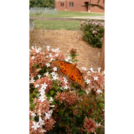
In this lesson, students use the real-world application of insect monitoring to practice their fluency with addition and subtraction.

Students identify different bridge designs and construction materials used in modern day engineering. They work in construction teams to create paper bridges and spaghetti bridges based on existing bridge designs. Students progressively realize the importance of the structural elements in each bridge. They also measure vertical displacements under the center of the spaghetti bridge span when a load is applied. Vertical deflection is measured using a LEGO MINDSTORMS(TM) NXT intelligent brick and ultrasonic sensor. As they work, students experience tension and compression forces acting on structural elements of the two bridge prototypes. In conclusion, students discuss the material properties of paper and spaghetti and compare bridge designs with performance outcomes.

Everyday we are surrounded by circuits that use "in parallel" and "in series" circuitry. Complicated circuits designed by engineers are composed of many simpler parallel and series circuits. During this activity, students build a simple series circuit and discover the properties associated with series circuits.

Students analyze international oil consumption and production data. They make several graphs to organize the data and draw conclusions about the overall use of oil in the world.
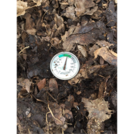
Students will use the decomposition of a compost pile to visualize fractions as parts of a whole.